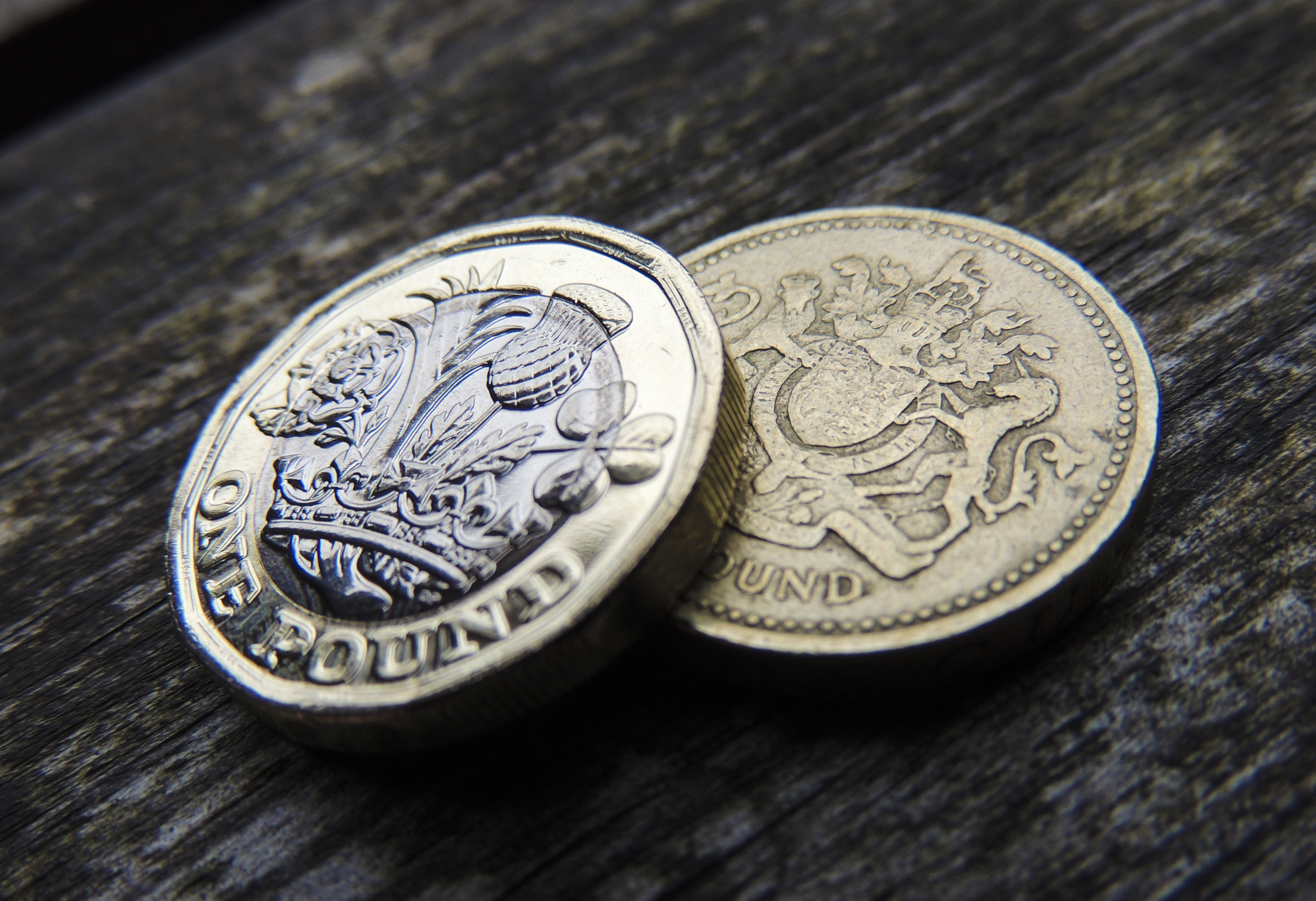Will gas and electricity bills fall? Energy price forecast
Billpayers in the UK have seen their energy bills rise by around £35 a year after the October price cap was introduced. Where will prices go next?


Ruth Emery
Energy bills rose by 2% on 1 October when the new Ofgem energy price cap came into effect.
The current cap means the average annual price of energy for a typical dual-fuel household consuming the average amount of energy and paying by direct debit is £1,755 a year for the period between 1 October and 31 December.
This is a hike of around £35 per year when compared to the previous July to September price cap of £1,720.
MoneyWeek
Subscribe to MoneyWeek today and get your first six magazine issues absolutely FREE

Sign up to Money Morning
Don't miss the latest investment and personal finances news, market analysis, plus money-saving tips with our free twice-daily newsletter
Don't miss the latest investment and personal finances news, market analysis, plus money-saving tips with our free twice-daily newsletter
The price cap is set on a quarterly basis by the energy regulator and around 20 million households are on variable energy tariffs that move with changes to the price cap. Those on a fixed energy deal instead lock in at a certain price for a fixed amount of time.
As the price cap figure refers to the typical annual bill for a household paying by direct debit, you may pay more or less, depending on your energy consumption.
The price cap for the first quarter of 2026 will rise by 0.2%, bringing the average annual energy bill to £1,758, just £3 more than it currently is.
But where will prices go beyond the first three months of 2026? We look at what analysts are saying.
Will energy bills fall next year?
Energy prices will not immediately fall in 2026, Ofgem has confirmed, as the price cap will rise by 0.2% for the first quarter of the new year.
It means the average family on a variable dual-fuel tariff, paying by direct debit, will have an annual energy bill of £1,758 in the first three months of 2026.
The rise means households will pay around an extra 28p per month, or £3.36 a year between January and March, compared to now.
The minute rise comes despite the falling cost of wholesale energy as new charges are being included within the price cap. The most significant of these is the new Regulated Asset Base (RAB).
The RAB is designed to raise money to support investment in new nuclear power stations by spreading the costs of construction and operation across consumer bills. Ofgem says it adds around £1 a month to energy bills.
The January to March 2026 price cap can be found below:
Energy price cap per unit and standing charge 1 October to 31 December 2025 | Energy price cap per unit and standing charge 1 January to 31 March 2026 | |
|---|---|---|
Electricity | 26.35 pence per kWh 53.68 pence daily standing charge | 27.69 pence per kWh 54.75 pence daily standing charge |
Gas | 6.29 pence per kWh 34.03 pence daily standing charge | 5.93 pence per kWh 35.09 pence daily standing charge |
Source: Ofgem
Dr Craig Lowrey, principal consultant at Cornwall Insight, said: “As expected, the January price cap is pretty much holding steady compared to October, but the story doesn’t end there. Our forecast shows bills climbing again in April, but not because of wholesale energy – it’s down to the non-energy costs that keep the system running and future proofed.”
Where will energy prices go next year?
While energy prices will have a practically imperceptible rise in the first quarter of 2026, a bigger shake-up can be expected in April.
In the Autumn Budget, chancellor Rachel Reeves said average household energy bills will be cut by around £150 a year after she announced some green levies will be axed in April 2026.
The chancellor announced 75% of the costs of the Renewables Obligation, which places an obligation on suppliers to buy renewable energy, will be taken off household energy bills for three years.
She also announced the Energy Company Obligation (“ECO scheme”), which requires some suppliers to help low-income households increase their energy efficiency, will not be extended past March 2026.
By removing these two green levies, the chancellor expects to shed around £150 from household energy bills. Energy consultancy Cornwall Insight estimates savings to be slightly less, at £145.
The cut comes at a convenient time for households as forecasters were expecting a steep increase in the price cap in April 2026, possibly as much as £57 according to Cornwall Insight, as policy changes currently being consulted on by Ofgem are set to be implemented.
With the above levies removed, it means the price cap is poised to fall in the second quarter of 2026 by just under £100 as the expected rise is offset.
Cornwall Insight, who are well-regarded for the accuracy of their price cap predictions, now forecasts the April price cap to be £1,675 per year for a typical dual fuel consumer, down £83 from the January cap.
Dr Craig Lowrey, principal consultant at Cornwall Insight, said: “Lower bills are always welcome, but we need to be realistic about what these measures achieve. Shifting some levies around does not remove the costs of running and decarbonising our energy system, it simply changes how they’re paid for.”
Lowrey added that while the policy will “take the sting out of energy bills right now,” the cost of cutting bills will be picked up elsewhere.
“Moving them to general taxation may mean those paying more tax shoulder a bigger share, so you could say it spreads the burden. But for most households, it won’t make a huge difference to what’s in their pocket.”
What do other forecasters say?
With the new cut, forecasters are mostly confident that the price cap will fall from January’s level when the new cap is introduced in April.
EDF Energy believes the annual price cap will fall by £73 from January to April to £1,685, but says it has ‘low’ confidence in the prediction.
The energy firm then expects prices to remain lower in the rest of 2026 thanks to the £150 cut. They expect bills to fall in the third quarter of 2026 before rising marginally in the last quarter of the new year.
Period | Price cap prediction (per year) | Confidence level |
|---|---|---|
Q4 2025 | £1,755 | Confirmed |
Q1 2026 | £1,758 | Confirmed |
Q2 2026 | £1,685 | Low |
Q3 2026 | £1,660 | Very Low |
Q4 2026 | £1,668 | Very Low |
Source: EDF, accurate as of 27 November
Remember, you should take these predictions with a pinch of salt as it is incredibly difficult to accurately forecast where energy prices will go so far in the future, especially considering how sensitive the wholesale energy market can be.
What do rising energy prices mean for you?
As the energy price cap rose on 1 October, households on a variable tariff will find they are paying slightly more for their energy than they did between July and September.
While Ofgem estimates the average annual bill for the last quarter of 2025 is £1,755, some households will pay more than this and some will pay less.
This is because unit costs and standing charges are capped, not energy bills. Households that use more gas and/or electricity could end up paying significantly more while ones that restrict their energy usage will pay less.
The below table summarises how unit costs and standing charges have changed over the course of this year. It also has the latest forecast from Cornwall Insight for April, which includes the expected savings from the chancellor’s green levy cut.
| Header Cell - Column 0 | July price cap | October price cap | January 2026 price cap | April 2026 (Cornwall Insight prediction) |
|---|---|---|---|---|
Electricity unit cost (per kWh) | 25.73p | 26.35p | 27.69p | 26.47p |
Electricity standing charge (daily) | 51.37p | 53.68p | 54.75p | 0.65p |
Gas unit cost (per kWh) | 6.33p | 6.29p | 5.93p | 6.17p |
Gas standing charge (daily) | 29.82p | 34.03p | 35.09p | 0.34p |
Typical annual household bill | £1,720 | £1,755 | £1,758 | £1,685 |
Source: Ofgem (confirmed figures) and Cornwall Insight (April forecast). Typical annual bill based on customers paying by direct debit. Latest Cornwall Insight predictions as of 27 November.
Should I fix my energy?
Some fixed energy deals look competitive compared to the Ofgem energy price cap. The regulator is urging people to consider fixed-price deals, which could potentially save them hundreds of pounds a year.
Whether you should fix your energy or not depends on where prices are heading next and your attitude to risk.
Fixing now risks locking in rates that could become uncompetitive if prices drop in the new year. If prices rise, you could have saved money by fixing.
If you value cost certainty, opting for a fixed deal means you will know exactly what your outgoings will be for the next 12 months. MoneyWeek suggests weighing up the options on the market and assessing whether fixing meets your financial needs.
For more information on whether or not you should fix your energy bills, read our article on if you should switch to a fixed energy tariff.
How to keep energy bills low
To help you keep energy bills low, we have gathered some top tips in our article looking at 14 ways to reduce your energy costs.
If you're interested in the best ways to improve your energy efficiency and reduce costs, we explore radiators versus electric heaters, heated airers versus tumble dryers, and wood burning stoves versus central heating in separate articles.
How to get help with paying your energy bills
If you’re struggling to afford your energy bills, don’t bury your head in the sand and build up large debts.
Your energy supplier may offer support, for example, some suppliers have hardship grants. Octopus Energy has Octo Assist and British Gas has the British Gas Energy Trust.
You may be able to get a repayment holiday. This is where you ask your supplier to pause your repayments for a short amount of time to give you some breathing space.
Another option is to agree to an affordable payment plan. You will pay fixed amounts over a set period of time, which will cover what you owe plus an amount for your current use.
If you are on benefits, you might be able to repay your debt directly from your benefits through the Fuel Direct Scheme.
According to Citizens Advice, the Fuel Direct Scheme can be a good option if you can’t agree on a plan to pay back your debt, and it’s usually better than getting a prepayment meter.
Additionally, some government schemes give some households money towards paying their energy bills.
The Warm Home Discount is offered to households in receipt of some means-tested benefits who use participating energy suppliers and provides £150 of credit that is automatically paid towards your energy bill.
Meanwhile, if you are a pensioner with an income of £35,000 or less, you will be eligible for the Winter Fuel Payment, which provides retirees with up to £300 each winter.
What’s happening with standing charges?
The current standing charge regime is set to be shaken up by Ofgem after consumers criticised the current system as being unfair.
Under new plans from the energy regulator, households are set to be given the choice to pay lower standing charges, but at the cost of higher unit costs.
Every major energy firm will be required to offer their customers this choice by the end of January 2026 – but Ofgem has warned that energy bills are unlikely to fall. Instead, fees will simply be moved from one part of the bill to another.
Whether you should switch to the new tariff with lower standing charges in January 2026 depends on your own personal circumstances. Ofgem recommended households should “consider their circumstances and seek advice from their supplier or consumer groups” to see if switching to a new tariff is best for them.
While some consumers may find this new option helpful, the results of the consultation have come as a blow to billpayers who want to see more significant reform to how energy bills are paid.
Other organisations, such as trade body Energy UK, have also argued that this reform will simply serve to further complicate standing charges for consumers.
Get the latest financial news, insights and expert analysis from our award-winning MoneyWeek team, to help you understand what really matters when it comes to your finances.
Daniel is a financial journalist at MoneyWeek, writing about personal finance, economics, property, politics, and investing.
He is passionate about translating political news and economic data into simple English, and explaining what it means for your wallet.
Daniel joined MoneyWeek in January 2025. He previously worked at The Economist in their Audience team and read history at Emmanuel College, Cambridge, specialising in the history of political thought.
In his free time, he likes reading, walking around Hampstead Heath, and cooking overambitious meals.
- Ruth EmeryContributing editor
-
 ChatGPT turns three: what’s next for the ‘AI era’?
ChatGPT turns three: what’s next for the ‘AI era’?Three years after its launch kickstarted the age of AI, ChatGPT and its maker OpenAI are driving the stock market. But concerns are growing over whether OpenAI will be able to turn its AI dominance into profit.
-
 What to do with old £1 coins
What to do with old £1 coinsThe old one pound coin was demonetised in 2017, but there are still millions out there in the UK. Here’s what to do if you find an old £1.
